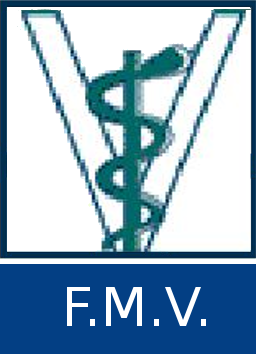Development of an automated counting method to evaluate SARS-CoV-2 positive nasal mucosa epithelial cells in SARS-CoV-2 infected Syrian hamsters
Quertain, Eléonore 
Promoteur(s) :
Desmecht, Daniel 
Date de soutenance : 29-jui-2023 • URL permanente : http://hdl.handle.net/2268.2/17936
Détails
| Titre : | Development of an automated counting method to evaluate SARS-CoV-2 positive nasal mucosa epithelial cells in SARS-CoV-2 infected Syrian hamsters |
| Titre traduit : | [fr] Développement d'une méthode automatique de comptage pour évaluer le nombre de cellules épithéliales de la muqueuse nasale positives au SARS-CoV-2 chez le hamster syrien infecté par le SARS-CoV-2 |
| Auteur : | Quertain, Eléonore 
|
| Date de soutenance : | 29-jui-2023 |
| Promoteur(s) : | Desmecht, Daniel 
|
| Membre(s) du jury : | Delguste, Catherine 
Cassart, Dominique 
Garigliany, Mutien-Marie 
Antoine, Nadine 
Toppets, Vinciane 
|
| Langue : | Anglais |
| Nombre de pages : | 49 |
| Mots-clés : | [fr] covid-19 |
| Discipline(s) : | Sciences du vivant > Médecine vétérinaire & santé animale |
| Public cible : | Chercheurs Professionnels du domaine Etudiants |
| Institution(s) : | Université de Liège, Liège, Belgique |
| Diplôme : | Master en médecine vétérinaire |
| Faculté : | Mémoires de la Faculté de Médecine Vétérinaire |
Résumé
[fr] The COVID-19 pandemic caused by SARS-CoV-2 requires effective strategies to prevent viral transmission. The potential of nasal vaccination as a mean of inhibiting viral entry and replication in the nasal mucosa, which serves as the primary site of SARS-CoV-2 infection, needs to be investigated. This research aims to develop a new method which would allow for an automated cell counting in order to compare the results obtained in SARS-CoV-2 infected an unvaccinated Syrian hamster to SARS-CoV-2 infected Syrian hamsters vaccinated either by the nasal or the systemic route, in order to assess the efficacy of the vaccines.
Immunostaining combined with image analysis using QuPath software was used to count the number of SARS-CoV-2 infected cells. A novel method of digesting whole nasal mucosa was developed to obtain a cell suspension for flow cytometry, the results of which will be used to validate the QuPath results. Ten Syrian hamsters were used as positive controls to aid method development. Results highlight the importance of repeatable sampling techniques, mucosal dissection and staining techniques. This research shows that the QuPath open source image analysis software using a trained cell classifier is promising for automating the counting of SARS-CoV-2 infected cells. Furthermore, the new method for whole nasal mucosa dissection worked, suggesting that our new counting method would allow the establishment of a baseline number of SARS-CoV-2 infected cells in the nasal mucosa of SARS-CoV-2 infected Syrian hamsters, which could be compared to hamsters vaccinated by the nasal and systemic routes in order to assess their efficacy.
Fichier(s)
Document(s)
Citer ce mémoire
L'Université de Liège ne garantit pas la qualité scientifique de ces travaux d'étudiants ni l'exactitude de l'ensemble des informations qu'ils contiennent.


 Master Thesis Online
Master Thesis Online



 QUERTAIN_Eléonore_TFE_FMV_juin2023_définitif.pdf
QUERTAIN_Eléonore_TFE_FMV_juin2023_définitif.pdf

